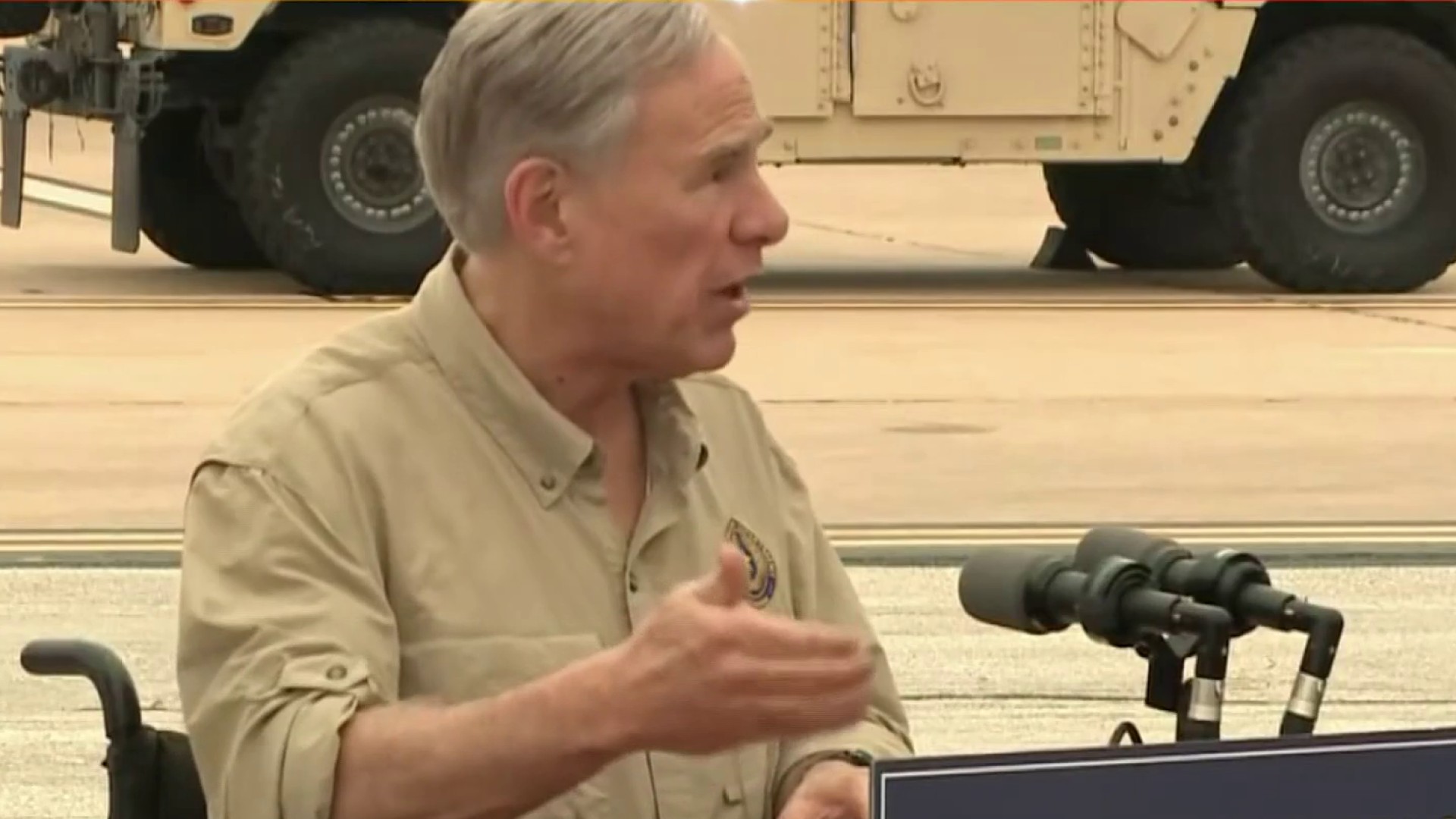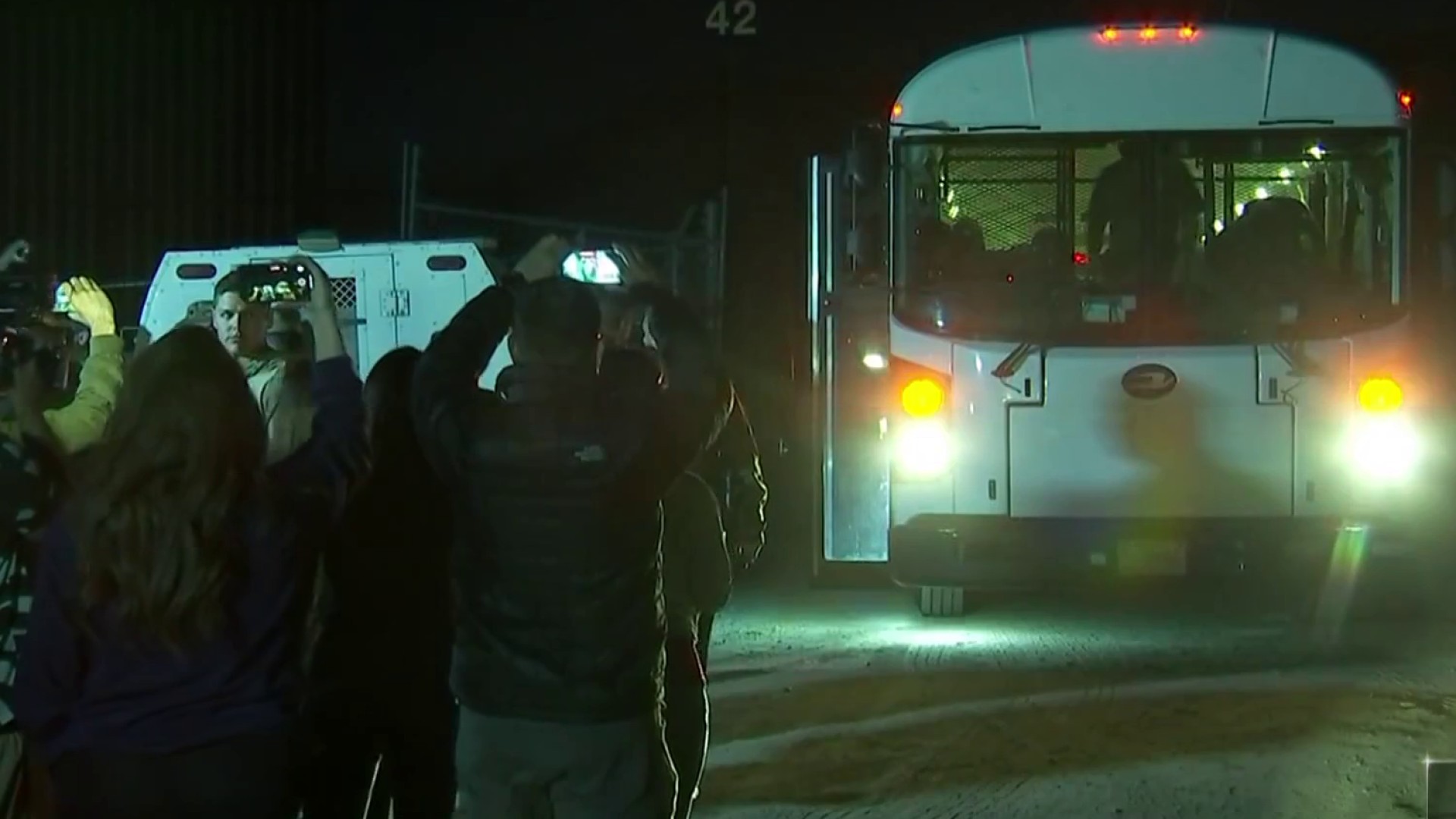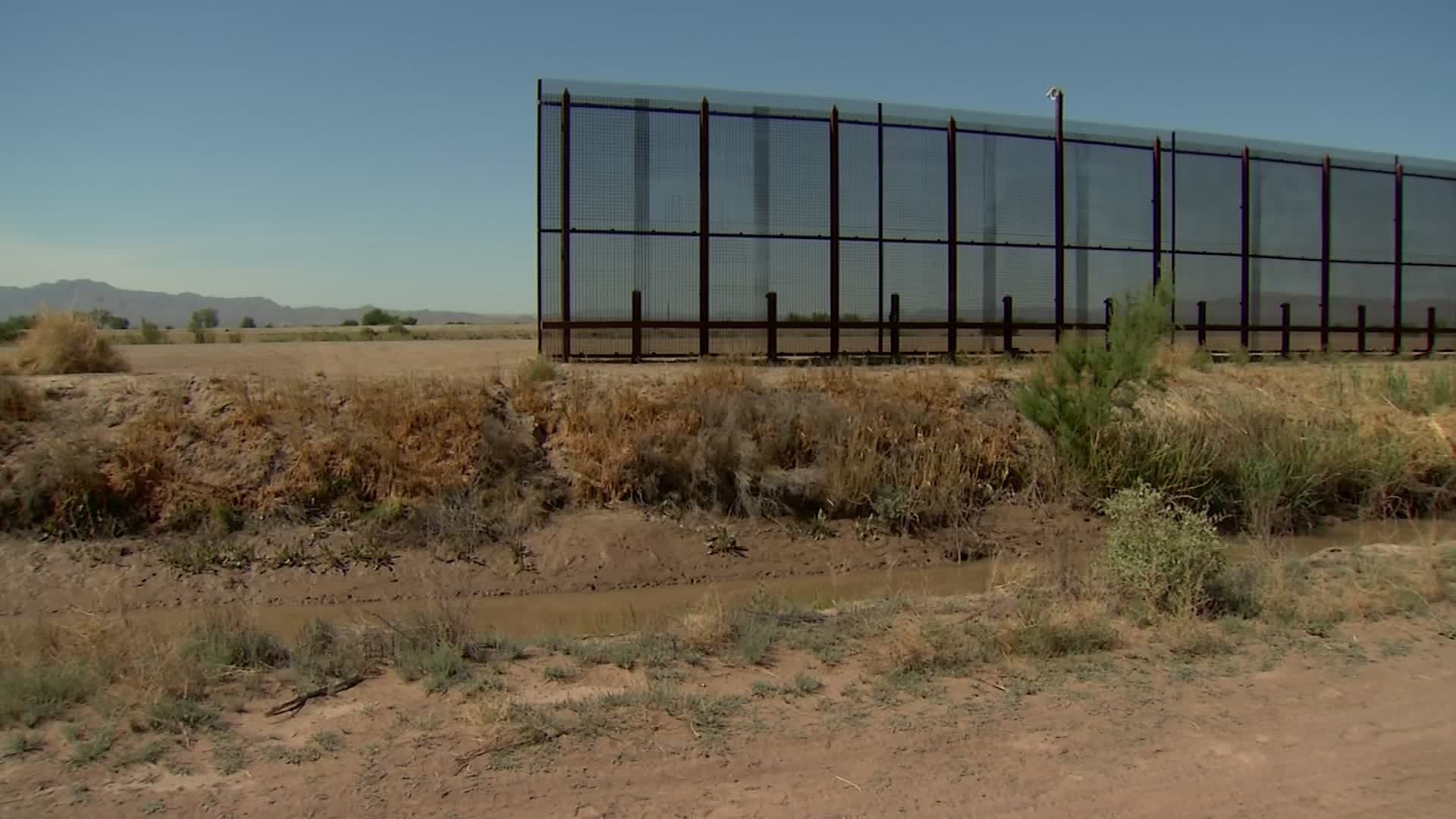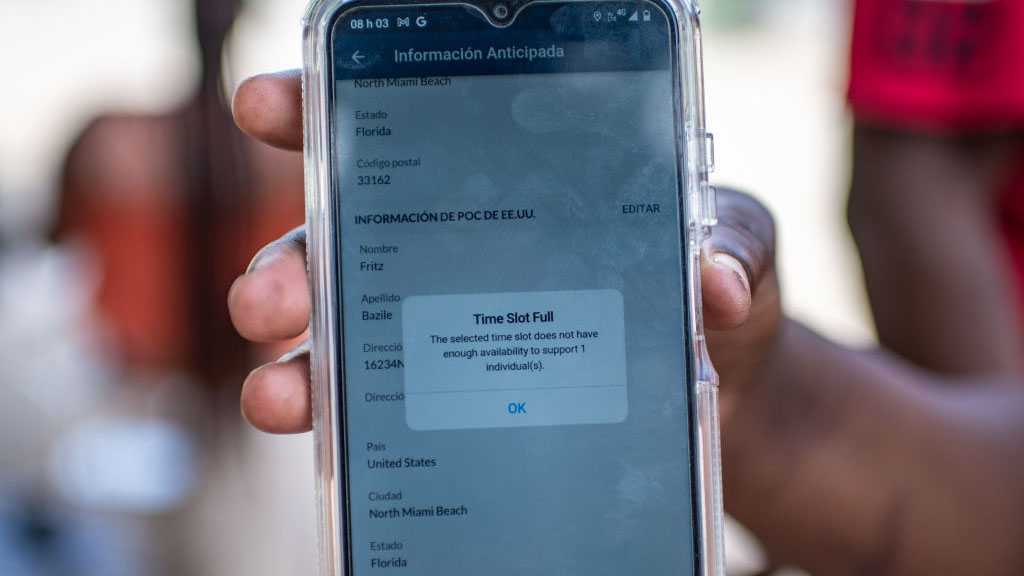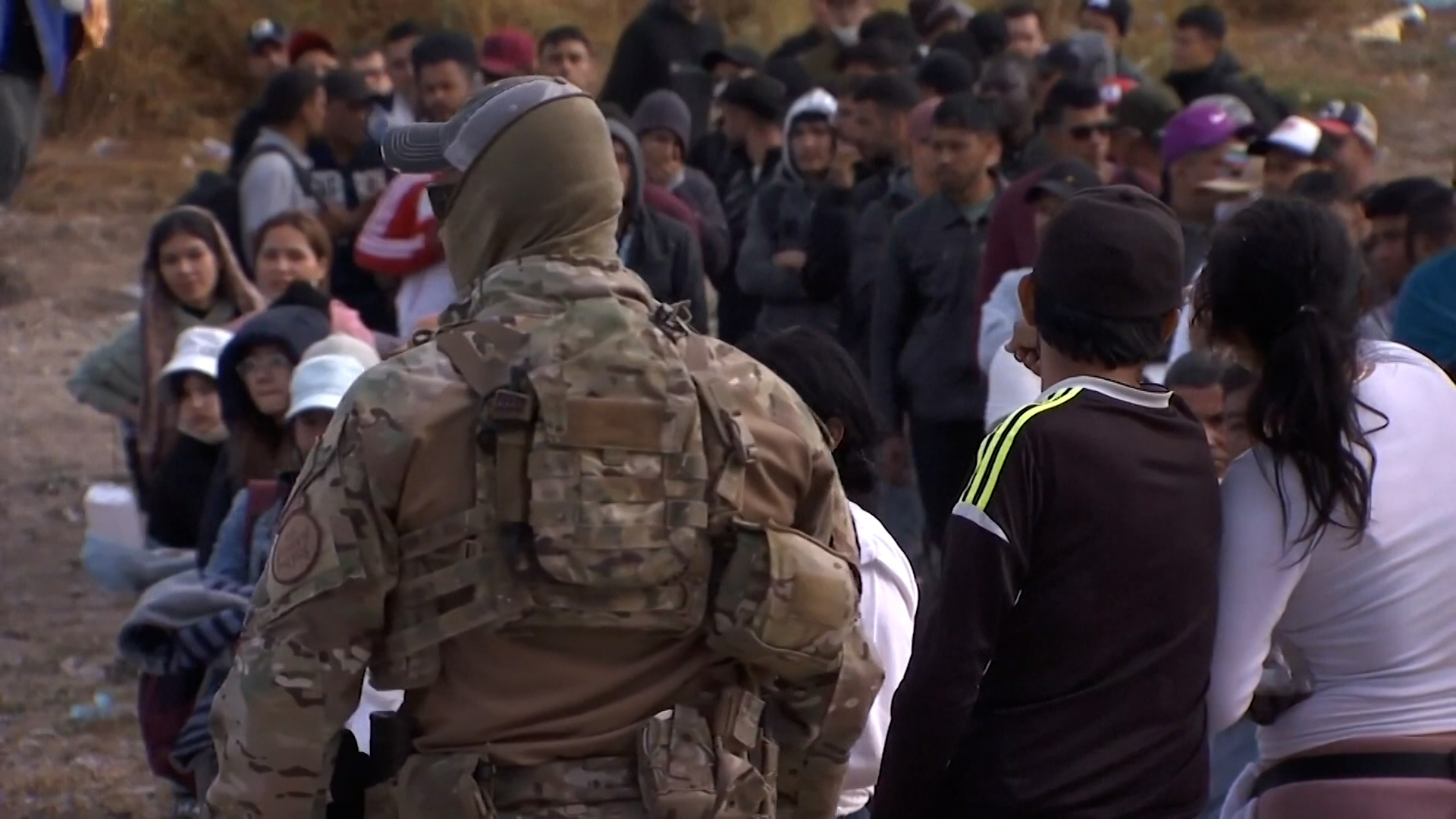What to Know
- Title 42 is the pandemic-era policy put in place during the Trump administration to immediately expel migrants without holding asylum hearings on the grounds of preventing the spread of Covid-19.
- TItle 42 expires at 11:59 p.m., ET, Thursday, in conjunction with the end of the national Covid public health emergency.
- Title 8 will replace Title 42 and will allow migrants to apply for legal pathways to enter the U.S.
NBC 5 reporter Maria Guerrero shares a first-hand account of what she's seen and witnessed along the border between Texas and Mexico.
Over the past two years, veteran NBC 5 photojournalist Michael Heimbuch and I have traveled to Texas border communities covering what I would honestly describe as a crisis -- a humanitarian crisis and a border security crisis.
As a Mexican-American and immigrant myself, I am passionate about immigration issues. I understand and empathize with both sides of this complex issue that has long divided many.
Get DFW local news, weather forecasts and entertainment stories to your inbox. Sign up for NBC DFW newsletters.

What NBC 5 viewers at home have watched unfold on local and national news across the southern border is the culmination of a long-broken immigration system.
This week, we are reporting from the southernmost tip of Texas. Brownsville, with Matamoros, Mexico, across the Rio Grande, is considered one of the “hot spots” for illegal crossings leading up to the end of the Covid-era border restriction policy Title 42.
Like the city of El Paso, Brownsville has declared a state of emergency ahead of the end of Title 42. The border crossings here are now lined with razor wire in an attempt to keep undocumented migrants from crossing into the city.
Earlier this week Texas. Gov. Greg Abbott (R) tweeted a video of the wire being installed in Brownsville and said more was coming to help seal off the border. The governor, who has long decried the problems at the border, has dispatched state troopers and deployed the state guard to beef up resistance along the river and ease the burden on federal agents. Just last week he announced the creation of the Texas Tactical Border Force to further bolster Operation Lone Star, his efforts to enhance border security. Abbott is also working legislatively, directing state lawmakers to make it a felony to illegally enter Texas from Mexico.

Title 42 was implemented during the Trump administration to quickly expel hundreds of thousands of migrants arriving at the southern border in order to help stop the spread of COVID-19.
The Biden Administration has pushed for the public health policy to be lifted because the global pandemic has been declared over, but legal challenges have kept the policy from ending until now. Title 42 will end at 11:59 p.m. ET on Thursday and be replaced with Title 8, the normal immigration law that will allow migrants to apply for legal paths into the United States.
What is certain is that the next few days and weeks will be chaotic.
Republican lawmakers and law enforcement agencies have fought to keep the policy in place to help keep the border from being overrun by an influx of immigrants from across the world hoping to enter the United States.
While politicians on both sides of the political aisle squabble over Title 42, about whether this is “a crisis,” about who’s at fault, or about whether the border is “secure,” desperate migrants from around the world, as well as border towns across Texas, are caught in the middle.
Mexican drug cartels and human smugglers take advantage of the political back and forth, further exploiting migrants by disseminating false promises of an “open border.”
Frustration is mounting.
Groups of migrants, many with small children, have risked their lives wading through the unpredictable Rio Grande River hoping to reach U.S. soil to either surrender to immigration officials or continue their hopeful journey toward a brighter future.
A number have perished along the way. We will likely never know the death toll.
Days ago, a group of mostly Venezuelan migrants, rushed the port of entry bridge in El Paso, demanding officials let them through. Razor wire and armed agents kept them at bay.
Congress is finally trying to hammer out a last-minute deal to address the latest wave, but it is a bill that could include partisan proposals related to the millions of undocumented people already in the U.S., the fate of DACA recipients, and the fate of the unfinished border wall.
At the request of Homeland Security, President Biden temporarily deployed 1,500 active duty U.S. soldiers to the border to handle “paperwork duties” freeing up Border Patrol agents to patrol the border and encounter migrants. Immigration advocates blasted the president for “militarizing” the border, raising fear among vulnerable people.
Scenes From the US-Mexico Border as Title 42 Ends
A COMPLEX CHALLENGE
The Biden Administration has repeatedly proclaimed ‘the border is not open.’
Vice President Kamala Harris, appointed to seek solutions to illegal immigration, famously traveled to Central America to tell migrants: “Don’t come. Don’t come.”
But they came. By the droves. Hundreds of thousands of migrants left their poverty-stricken, politically unstable and often violent countries with hopes of a better life in the United States.
CBP enforcement reported two million border encounters, which includes some migrants who’ve repeatedly tried to cross into the U.S.
An immigration policy that would punish repeat crossers, banning them from seeking asylum in the U.S. for five years is among ideas reportedly being considered by the White House.
Embattled Secretary of The Department of Homeland Security Alejandro Myorkas has become a constant on the Sunday morning news circuit proclaiming the southern border is secure and the administration is prepared for Title 42 to end, increasing resources on the border in preparation for an anticipated increase in crossings.
The Department of Homeland Security estimates more than 10,000 migrants are expected to cross into the U.S. every day once Title 42 is lifted.
Title 42 is a CDC public health policy dating back to the 1940s, allowing for the quick expulsion of migrants to stop the spread of disease or illness. The Trump administration implemented the policy in March 2020 at the start of the Covid-19 pandemic to stop the spread of the highly contagious and deadly virus.
Critics contend the Trump administration, and now the Biden Administration, have exploited Title 42 to keep migrants from seeking asylum, using the public health policy as an excuse to withhold due process. Under Title 42, border patrol agents are able to quickly expel migrants to Mexico or their home countries without allowing their asylum claims to be heard.
A large number of Haitians have fled their country for several years, after devastating storms extreme poverty and political unrest. Many Haitians have made their way through South America, Central America and Mexico hoping to reach U.S. soil and claim asylum.
Title 42 has barred many Haitians from entering the U.S. until Title 42 is lifted. Not wanting to return to Haiti, many have been living in filthy encampments across the Mexican border from Texas cities like Del Rio and Laredo.
Advocate groups have long criticized the expulsion, calling it inhumane and unconstitutional.

But hundreds of thousands of migrants have been allowed into the U.S. despite Title 42. This is where the federal government’s narrative does not fit the reality on the ground.
We’ve met and shared their stories for two years.
Migrants who have surrendered to Border Patrol were processed and released to migrant aid organizations known as NGOs (non-governmental organizations) or onto the streets of border towns.
Single men, women and families have been allowed into the U.S. with an ankle monitor and a mobile phone to report to immigration authorities for a hearing to determine if they can remain in the U.S.
In recent weeks, a swell of tens of thousands of migrants has been journeying to the southern border in hopes of “squeaking by” before Title 42 is lifted.
More than 2,000 migrants crossed into the city of Brownsville on Monday night alone, mostly Venezuelans.
Some of the exhausted migrants you see on video lined up who are then bussed away by border agents will be processed and sent back to Mexico or their home countries, but others will be processed and released with a court date, months or years later.
The recent influx has overwhelmed detention centers along the border leading CBP officials to release migrants with a promise to appear in court to determine if they are potential candidates for asylum. A backlog of existing cases in immigration courts means many of these cases will take years to finalize.
It is true some migrants will agree to the court hearing but not show up, and instead fade into the shadows.
Migrant aid organizations in border communities like Brownsville have, for several years, stepped in to help provide shelter to migrants released into the U.S. But there’s only so much space available in shelters and the migrants keep coming.

These NGOs, funded through FEMA, have worked closely with counties and shelters farther into Texas and border states willing to accept migrants by bus.
Oaklawn United Methodist Church in Dallas is one place that has accepted dozens of migrants. The shelter serves as a quick stop for migrants to receive a meal, a shower, and help in purchasing air or bus tickets to their final destinations. The goal is to have migrants in and out of Dallas within a few hours, according to OUMC.
The church has partnered with El Paso County to potentially receive up to 100 migrants a day, for up to five days a week, though plans have not yet been finalized.
Legal experts and officials in law enforcement contend a large number of migrants claiming asylum do not actually qualify for the program, as the threshold is high. Simply fleeing one’s country over a lack of jobs and poverty is not an acceptable claim, according to immigration attorneys NBC 5 has spoken with over the years.
TITLE 42
SOLUTIONS BEING CONSIDERED
Homeland Security Secretary Alejandro Myorkas stresses when Title 42 ends, other immigration policies will be implemented once again, including Title 8.
Title 8, he assures, will cut down on illegal border crossings because unlike Title 42, it carries potential penalties for repeat illegal crossings including a five-year ban on asylum claims in the U.S.
The Biden Administration has announced plans to set up a streamlined system for migrants to apply for asylum in their own countries to dissuade them from making the dangerous trek to the southern border.
One effort to cut down on illegal crossings is for migrants to use an application on their mobile phones to apply for asylum, though many people have reported glitches with the system.
The administration also expanded the number of appointments allowed through the app after migrants complained that limited timeslots were almost immediately taken.
The administration is also reaching a consensus with Mexico to continue allowing migrants from certain countries to be expelled to Mexico once Title 42 ends, including migrants from Venezuela, Nicaragua, Cuba and Haiti.

Another plan being considered is rejecting asylum claims if an immigrant did not first seek asylum in a country along their journey to the U.S.
Homeland Security announced targeted enforcement in El Paso on Monday, quickly drawing criticism from the union representing border patrol agents for announcing the operation ahead of time. ICE agents were deployed to search for undocumented migrants sleeping on the streets of El Paso, warning them to report to border patrol if they have not been processed or risk deportation.
Although Title 42 is set to end, the U.S. Supreme Court has yet to hear oral arguments over the policy and its future. It’s unclear whether a decision could affect the policy in the coming months.
So you see, the issue of Title 42 is complicated and changing by the minute. Make no doubt about it much is at stake.
Consider the very real need to fill jobs across the country, particularly in construction and agriculture, jobs migrant workers are eager to fill.
Lawmakers on both sides know this.
While much will be said in the coming hours and days, I hope people can show at least some empathy. These are human beings who did not necessarily want to leave their home countries and whether they should have left is absolutely debatable.
They are people who say they are so desperate for a better tomorrow, they’re willing to leave everything behind and risk their lives traversing entire countries, dangerous jungles, encountering violence, enduring hunger and thirst, hoping to reach a country that has long been considered a beacon of hope and opportunity.
TITLE 42
Sign up for our Breaking Newsletter to get the most urgent news stories in your inbox.

